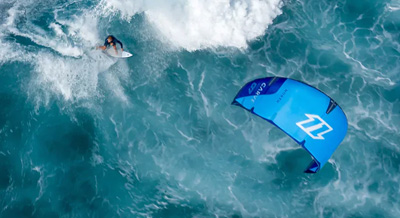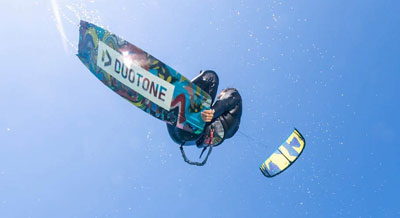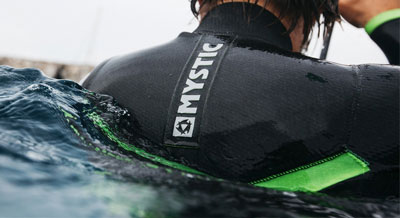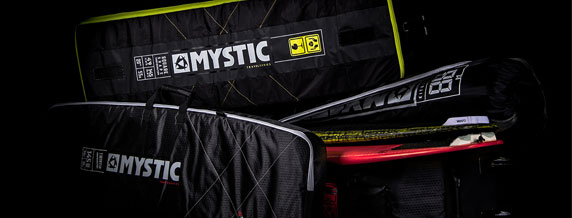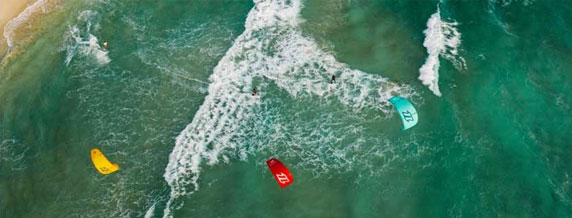- Home
- Blogs
22.01.2021
Snowkiting - the winter alternative for kitesurfers?!

When it gets cold outside and the conditions too harsh for some to hit the water, snow kiting season is in full swing! Often there are snow kiting spots at your doorstep and you can start off using most of your kitesurf gear… some of the reasons, why this sport is becoming increasingly popular each winter. Our German colleague Svenja discovered her passion for snowkiting a while back and now with many being stuck at home, unable to fly to Cape Town, she wrote a blog on how to get started, where to find snowkiting spots, some advice regarding safety and why snowkiting can get addicting very fast! Enjoy the read and give it a go!
Snowkiting has been around for a relatively long time, but surprisingly it is not as widespread as kitesurfing. Next to freeriding, snowkiting is also favourable means of transportation used by adventurers on expeditions. In high alpine terrain, advanced kiters use their kite to conquer secluded peaks and to then put fresh tracks in pristine snow when skiing or snowboarding down far away from signs of civilization. That’s what many perceive as the end level in the snowkiting game. In addition, there are freestyle and race competitions which are however not less exciting than the forms of the sport and just as interesting, like the different kitesurfing disciplines on the water.
For example, check out how Lasse and Steven to try out snowkiting for their first times... while competing in one of the toughest snowkiting races - the Red Bull Ragnarok!
Snowkiting is a good alternative for those, who can´t force themselves into their wetsuits in winter and also a nice way to play around and have some fun with their gear! There are many similarities to kitesurfing on water, but obviously there also some differences. We will go into what equipment to use, where to sknowkite and what is special about it below the video.
Tips for choosing the right snowkite equipment
In general, it is possible to take your equipment from the water into the snow. However, you should definitely pay attention to the local conditions. The wind conditions determine what type of kites you can use. If the wind is steady and constant, you can use your tube kite without any hesitations. If it is rather gusty and the wind is very weak, soft kites are often a better choice. In general, since there is often less wind than at snowkite spots than at the coastline, kites with good low-end are ideal. Kites that can generate a lot of power and have a stronger pull will get you going also in marginal conditions and will help you to cross through areas with deeper snow without getting stuck. You can find such kites in our Kitemana Shop at Big Air Kites section. Especially on early morning sunrise sessions with deep snow, the Core XR6 has proven itself many times as well as the Cabrinha Switchblade.As your board or skies have much less drag in snow, than your twintip on water, the snowkiting fun already start in much lighter winds compared to kitesurfing. If there is just enough wind for you to launch your kite and it does not stall constantly, you can go out and shred. In order to check the wind conditions at your snowkiting spot, your usual forecast apps like Windfinder & Co are not very helpful. Instead, check your local weather apps or websites such as Meteomedia.
Your waist or seat harness is just as suitable for the snow as it is for the water. The latter saves you from snow getting shoved into your snow pants. For that reason, one-piece snowsuits are great and superior to the pants and jacket combo. If you want to fly high and far, you should consider putting on a climbing harness in addition to your kitesurf harness. The force and load when gliding down a slope for hundreds of meters is different compared to your average kitesurfing jump. This is obviously a more advanced maneuver, but you can reach greater heights and cover more distance quite fast in alpine terrain, so that extra bit of safety helps to give you give you peace of mind.
When asked whether you should use skis or snowboards for snowkiting, I recommend the respective sports equipment that you feel most comfortable with. Skiers often find snowkiting easier than snowboarders at the beginning, as they are more mobile on their skis and can skate a few meters back and forth. Snowboarders sometimes have a harder time because they have to open their bindings and walk. However, snowkiting with a snowboard comes closer to kitesurfing on the water and maneuvers and tricks from the water can thus be easily transferred to the snow. As a skier, you should set your bindings so that they release faster than when skiing on the slopes. If you crash and the kite generate some pull, it is nice, when the skies release earlier. As a snowboarder, the bindings should be set to duck stance, so that you can ride in both directions, just like on the water.
Wearing a helmet is a must and we should not have to highlight that, but just in case… ‘wear a helmet!’. Snow googles and gloves are also recommended for protection against impacts and the cold. Snowkiting is more physically demanding than skiing on the slopes, so you shouldn't dress too warmly. Following the ‘onion technique’ by putting on several layers is key when choosing a snowkite outfit.
Tips for riding technique and kite control
If you are a good halfway decent kiter on the water, you won't have much problems adapting to snow. However, changing from a flat surface like a valley or plateau to alpine terrain makes riding more challenging. The technique there is very similar to wave kiting. To get up the slope you have to fly your kite very dynamically so that it generates enough power. When you go down, you put the kite in neutral, similar to when you ride a wave. The maneuvers in the snow such as turning, jibing and jumps are quite similar to those on the water, but still you will be surprised how different it feels on the harder surface. It is usually more difficult to hold the edge and to build up enough edge pressure for high jumps. You will need some time to get used to, but you will able to improve your take-off technique by training that also for sessions on the water.If you decide to switch from a tube kite to a soft kite for the snow, you should be aware that this requires different handling when setting up, launching and landing. You should have an expert to show you this beforehand.
Tips for snowkiting safely
Even though you might be familiar with the basics of kitesurfing, it makes sense to get advice from an instructor first. Nico from Snowkite Wasserkuppe runs the snowkite school on the Wasserkuppe in Germany and recommends taking part in an introductory lesson or a snowkite safety briefing to make the switch from kitesurfing to snowkiting before storming the spot on your own. "This ensure that every rider knows about the correct behavior at the spot and safety measures as well as learns how to handle a soft kite if necessary". Keep in mind, snowkiting adds another dimension to the sport. Whoever remembers his first session on the water in big waves still knows the feeling when the ground suddenly becomes three-dimensional. In addition, of course, snow is often harder than water. Thanks to Nico's briefing, however, you are well prepared, know the right behavior and have the necessary knowledge of the spot so that you can fully enjoy your first turns in the powder.Tips to find snowkiting sports
In theory, you can snow kite any area that is covered in snow, is free of power lines and other obstacles and has suitable wind conditions. However, you should definitely get an okay from the local farmer who owns the area most often, as there are many farmers who are not really open to the sport. Here, as in summer on the water, it is important to maintain the reputation of the kiters and to rather ask one more time than to find yourself in trouble with the local farmer.Finding open space is often not the problem, but finding an area that also offers constant and sufficient wind is more difficult. Well-known snowkiting spots in Germany that provide good snow and wind conditions are, for example, the Feldberg in the Black Forest, the Ore Mountains and the Wasserkuppe in the Rhön.
Snowkite-Spot Feldberg, Germany
On top of the Feldberg you will find a large open area around the Feldberg tower. This plateau is roughly at 1500m altitude. This provides perfect snowkiting conditions for almost all wind directions. There is a defined zone in which snowkiting is allowed and you should always watch out for footpaths and other snow sports enthusiasts. The easiest access is via the ski lift in the adjacent ski area. From the highest lift it is only a few hundred meters up to the Feldberg tower. You can find more information at the Kiteschool-Skywalker.Snowkite-Spot Ore Mountains, Germany
In the Ore Mountains you will find countless snowkiting spots that can be used depending on the wind direction. One of the best known is probably the spot at Raitzenhain, near the Czech border. The huge open space offers a high level of wind security and plenty of space at around 840m above sea level. For those who are looking for a snowkite school in the Ore Mountains, Oberwiesenthal, offers several contact points. You can find more information at: Wintersport-im-Erzgebirge.de.Snowkite-Spot Wasserkuppe, Germany
The snowkite spot on the Wasserkuppe in the Rhön is located centrally in Germany and easy to reach for most and this playground for snow kiters is found at an altitude of almost 1000m. The advantage of the Wasserkuppe is that all wind directions can be kited. There is a high level of wind security and a lot of space available. The Wasserkuppe has a well-developed infrastructure that is right on the summit. There are several accommodation options, good restaurants, ski rental, ski lifts, and countless cross-country and winter hiking routes. There is something for everyone, even if the rest of the family is not enthusiastic about snowkiting. You can find more information at Snowkite.de - Nico is looking forward to your visit!Snowkite-Spots in Austria or Switzerland
Beyond German borders are world-class spots such as Lake Reschensee in Austria and Lake Silverplana in Switzerland. Both impress with a high level of snow and wind security. You can find more information on Vinschgau.net and on Kitesailing.ch.Snowkiting – an alternative to kitesurfing?!
I dared the experiment and took my kite gear with me into the snow, even though I was a bit skeptical at first. One very early morning, I stood at the top of the Wasserkuppe to pump my 10m Core Nexus2 wrapped in a snow suit and gloves… quite a weird feeling. The sky was crystal clear, the air crisp and cold and the wind was already blowing properly and fresh snow has fallen all night long before. It was just before sunrise and it was absurdly calm and a special atmosphere. I set off, pulled my first few turns and put fresh tracks into the powder. I let the kite pull me op the slope, only to make the descend in the finest fresh and deep snow I had in a long time. At this moment the sun started to rise and just reached over the edge of the mountains and turned the snow surface into a bright and shining pink color. I've seen many sunrises on the water, but the mood in the mountains this morning was something very special and makes my stomach tingle with excitement even now.The wind was getting stronger and stronger and I tried my first jumps. The deep snow slowed down my board a bit, but I also landed quite softly. After a few tries, it worked out quite well and I was slowly getting used to the element of snow.
After my session, I would recall this morning and each time I'm thrilled. Of course you need perfect conditions like me on this day to experience all the magic of snowkiting. But if we are honest, it's the same on the water. Often there is too little wind or choppy water, but when everything comes together, you can't save yourself from feelings of happiness - and that's the reason why we love kiting so much. For me it was definitely a great experience and not the last time that I took my kite gear to the snow.
Added to basket
| Subtotal | CHF 0,00 |
| Shipping costs CH | CHF 20,95 |
| Total Total(excl VAT) | CHF 20,95 |
You have no product(s) in you basket.
Weet je niet waar je moet beginner?
Contact our customer service for advice

